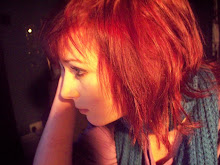The editing in The Science of Sleep trailer gives us an immediate and accurate insight into the main character. The trailer opens as the opening of the film does giving a sense of beginning and continuity. The soundtrack sets the scene as upbeat and between the words ‘Stephane’ and ‘TV’ coming on screen are 3 fast paced jump cuts of Stephane on the drums, the television, and focusing the cardboard camera on himself.
The trailer mixed long, naturalistic clips with jump cuts of his dream world to show the difference between the dreariness in his reality and the excitement of his dreams. This also gives us insight into the plot of the piece; we can see that like in the trailer half of it happens in his dreams and that this world is very important to him. The jump cuts give a sense of unprofessionalism which in this case works as Stephane has created the realms in his dreams himself; he would not be a skilled editor. It also works as in the dream world he is busy and flits from idea to idea; the jump cut shows his mental conflict and busyness.
From seeing the film I can see that the trailer is a linear narrative in the order that events happen in the film; from the very opening to the closing scenes. It is in essence a summary of the film.
During production the crew will have used a blue screen so that in post production they could add in images with a computer. The giant hands, cardboard rooms etc are a good example of this. A projector would also have been used to create the cardboard city and stop motion animation to make the train move through it etc – this gives it the jittery feel that makes it seem more homemade and effective. We can see that he has hastily created this with his mind.
When Stephane is creating something at his desk we can see eye-line match as he is looking down and the camera firstly shows us his face and then the thing he is looking at and creating with his giant hands. Cross cutting is the main technique used throughout as the dream world and Stephane’s reality are interweaved to show us the relation between the two and how he would like his world to be. In his dreams we can see that he wants to be the boss of the company he works for and get Stephanie to like him. This is a kind of parallel action as the dream world is happening when he is asleep, at the same time as his own reality.


















